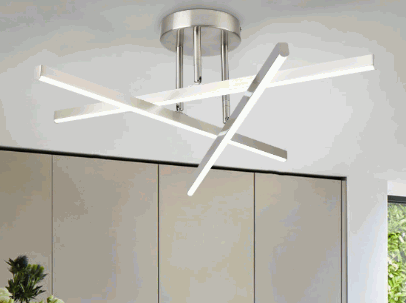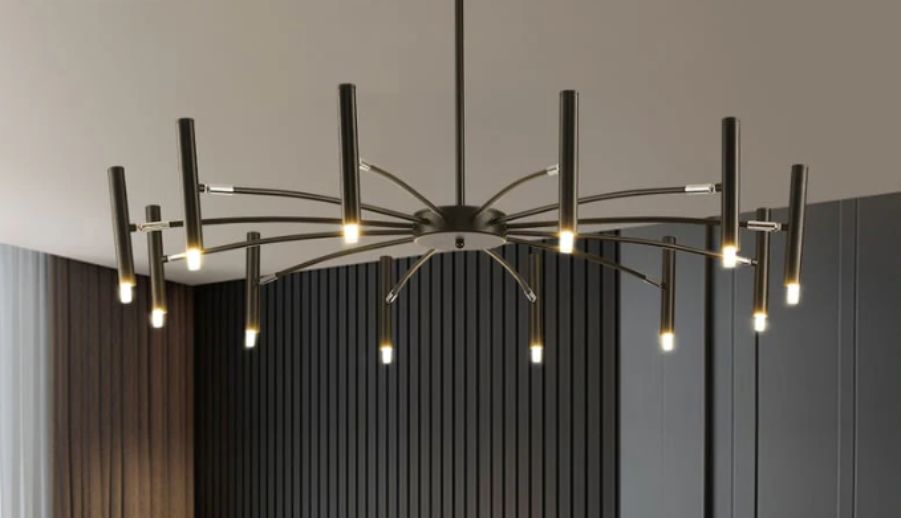LED ceiling lights have transformed the way we illuminate our spaces, offering a blend of efficiency, longevity, and style.
This guide explores what LED ceiling lights are, how they work, and the benefits they provide, including energy efficiency and design versatility.
It also addresses potential drawbacks and safety considerations, comparing them to traditional lighting options.
Whether you’re considering an upgrade or simply curious, this information will help you make informed choices about your lighting needs.
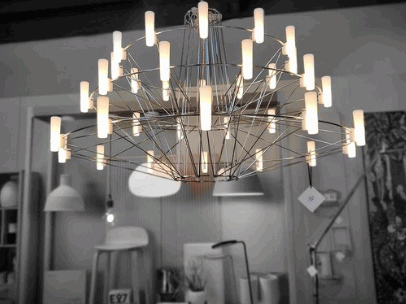
What Are LED Ceiling Lights?
LED ceiling lights have revolutionized the way we illuminate our spaces, offering a modern, energy-efficient alternative to traditional lighting options. These fixtures, including the popular Morris Slimline series, provide not only effective illumination but also enhance the aesthetic appeal of various rooms such as bathrooms, kitchens, and bedrooms. With their sleek designs and integrated LED technology, these fixtures ensure a high-quality lighting atmosphere while being mindful of energy consumption.
Discover more: How To Install LED Retrofit Kit
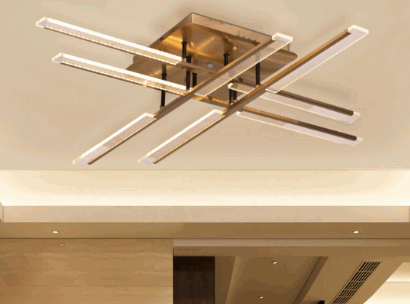
How Do LED Ceiling Lights Work?
LED ceiling lights function through the use of light-emitting diodes (LEDs), which convert electrical energy directly into light, providing a highly efficient light source with significantly longer lifespans than traditional bulbs.
This remarkable technology operates on principles that stand in sharp contrast to those utilized by incandescent and fluorescent fixtures, specifically in the way they manage energy and light production.
LED technology excels by consuming considerably less electricity, making it not only environmentally friendly but also cost-effective in the long run. Installation processes are generally straightforward, often allowing for a simple retrofit in existing fixtures. Potential flickering light issues may arise, which are typically related to compatibility with dimmer switches or the quality of the power supply.
- Compared to incandescent bulbs, LED lights offer about 75% energy savings.
- Fluorescent lights, while more efficient than incandescent, still fall short of LED efficiency.
- With careful installation, flickering can be minimized or eliminated.
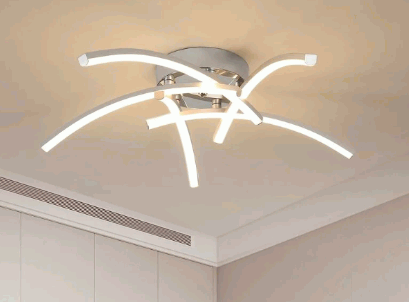
What Are The Benefits Of Using LED Ceiling Lights?
The benefits of using LED ceiling lights are numerous, making them a preferred choice among homeowners and designers alike. These fixtures are known for their energy efficiency, boasting significant reductions in energy consumption compared to traditional lighting options. Additionally, the long lifespan of LED bulbs translates into lower maintenance costs, while their versatility in design allows for seamless integration into various lighting styles and home decor preferences.
Energy Efficiency
One of the most significant advantages of LED ceiling lights is their energy efficiency, which can lead to remarkable energy savings over time, particularly in high-use areas such as kitchens and bathrooms.
Energy efficiency in home lighting is not just a trend; it is essential for reducing monthly utility bills and minimizing environmental impact. Compared to traditional incandescent bulbs, which waste approximately 90% of their energy as heat, LED technology provides significant improvements by converting a far greater percentage of energy into visible light. This means that when homeowners switch to LED lights, they can experience up to 80% less energy consumption while enjoying the same or even greater light output.
- For instance, a standard 60-watt incandescent bulb can be replaced with a 10-watt LED equivalent, providing similar brightness.
An average household can save over $100 per year on electricity bills by transitioning to LED lighting, underscoring how even small changes can lead to substantial financial benefits. The longevity of LEDs, lasting up to 25,000 hours, further highlights their cost-effectiveness and reliability.
Long Lifespan
LED ceiling lights are designed to last significantly longer than traditional light sources, with an average lifespan of up to 25,000 hours, reducing the need for frequent fixture replacements and maintenance.
This remarkable longevity not only means fewer interruptions for changing bulbs but also translates into significant cost savings over time. When comparing LED options to incandescent and fluorescent lights, the differences are stark. Incandescent bulbs typically last about 1,000 hours, while fluorescent lights can reach around 10,000 hours. Consequently, the reduced frequency of replacement with LED ceiling lights results in:
- Decreased waste from discarded bulbs.
- Enhanced quality of illumination throughout their lifespan.
- Less frequent maintenance in commercial or residential settings.
This extended lifespan contributes to overall lighting quality, ensuring that spaces remain well-lit without the fluctuations often associated with fading bulbs. Investing in LEDs fosters a more reliable lighting environment, positively affecting everything from mood to productivity.
Cost-Effective
Although the initial investment for LED ceiling lights may be higher than traditional fixtures, their cost-effectiveness becomes evident through their energy savings and reduced maintenance costs over time.
When evaluating the financial implications, one must take into account both the upfront costs and the long-term savings. For example, the average cost of electricity in the United States is approximately $0.13 per kWh. Traditional incandescent bulbs typically consume around 60 watts, while LED ceiling lights only use about 10 watts to produce the same amount of light. Over a lifespan of around 25,000 hours, this translates to significant savings on energy bills. LEDs can last over 20 years with minimal degradation in quality, which drastically reduces replacement costs.
- Using LED fixtures, homeowners can save approximately $200-$300 on electricity costs over their lifespan.
- Maintenance costs are also lower since LEDs require replacement far less frequently.
Ultimately, weighing these factors showcases the undeniable value of LEDs not just as fixtures but as long-term financial investments.
Versatility In Design
LED ceiling lights offer remarkable versatility in design, allowing homeowners to choose from a vast range of fixture types and styles that complement various home upgrades and decorative lighting themes.
From sleek, minimalist designs that embody a contemporary aesthetic to more ornate, classical styles that evoke a sense of warmth and tradition, the options are nearly limitless. Whether one is aiming for an understated touch in a modern living room or a vibrant statement piece in a cozy bedroom, these lights can enhance the ambiance perfectly. Their adaptability caters to diverse settings:
- Bedrooms: Soft, dimmable options can create a relaxing atmosphere.
- Kitchens: Bright, focused lighting enhances functionality and style.
- Living Spaces: A mix of flush mounts and chandeliers can harmonize with various interior themes.
With an increasing variety of designs, LED ceiling lights can suit any taste and significantly elevate the overall aesthetic of any room.
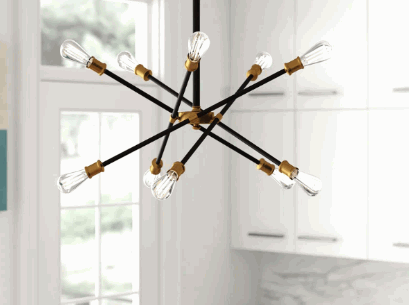
Are There Any Drawbacks To Using LED Ceiling Lights?
Despite their numerous benefits, LED ceiling lights do come with some drawbacks that potential buyers should consider, such as a higher upfront cost and the potential for glare in certain installations.
Higher Upfront Cost
One of the primary drawbacks of LED ceiling lights is their higher upfront cost compared to traditional lighting options, which can deter some consumers despite the long-term savings they offer.
When evaluating the initial investment required for LED fixtures, it’s important to consider other factors that contribute to overall expense, such as energy efficiency and lifespan. Unlike incandescent or fluorescent bulbs, LED lights consume significantly less energy and can last up to 25,000 hours or more. This extended longevity not only reduces the frequency of replacements but also minimizes maintenance costs and waste.
Homeowners should take into account these long-term benefits while weighing their budget. While the immediate sting of purchasing LED ceiling lights may be daunting, the eventual reduction in electricity bills and the need for fewer replacements can make them a cost-effective choice over time. Therefore, it’s crucial for consumers to align their current financial situations with their long-term financial goals, ensuring that they invest wisely in lighting solutions that could enhance their quality of life.
Limited Color Temperature Options
While LED ceiling lights are available in various colors, some users may find that their options for color temperature are more limited compared to traditional light sources, affecting their lighting preferences.
As a result, many individuals are increasingly interested in understanding how different Kelvin levels can impact their living or working environments. The color temperature of light, measured in Kelvins (K), plays a crucial role in not only setting the mood but also influencing overall productivity and comfort.
Generally, lower Kelvin temperatures (around 2700K-3000K) create a warm and inviting atmosphere, ideal for spaces such as living rooms and bedrooms. Conversely, higher temperatures (above 4000K) yield a cooler, more energizing effect, making them suitable for offices and workspaces where focus is paramount.
- Warm White (2700K-3000K): Creates a cozy ambiance.
- Neutral White (3500K-4100K): Balances comfort and clarity.
- Cool White (5000K-6500K): Mimics daylight, enhancing alertness.
Understanding these distinctions can help users make informed choices that enhance their specific environments.
Potential For Glare
Another consideration when using LED ceiling lights is the potential for glare, which can detract from the overall quality of ambient lighting in a room and affect comfort levels.
In terms of achieving a well-lit space, glare from LED fixtures can significantly interfere with user experience, making environments feel harsh and uninviting. This discomfort often stems from improper fixture placement, excessive brightness, or the angle at which the light is emitted.
To counteract these issues, several strategies can be employed:
- Choose the Right Fixture: Selecting fixtures designed with built-in shielding can help diffuse light more evenly and reduce direct glare.
- Adjust Mounting Height: Installing lights at an appropriate height ensures that light hits surfaces at gentle angles rather than aiming directly into the eyes.
- Combine Light Sources: Using a combination of ambient, task, and accent lighting can create a softer light environment while enhancing the room’s functionality.
- Utilize Dimmers: Integrating dimmer switches allows users to adjust lighting intensity based on their activities, helping to combat excessive brightness.
By thoughtfully considering these aspects during installation, one can significantly improve the lighting quality, creating a more comfortable atmosphere.
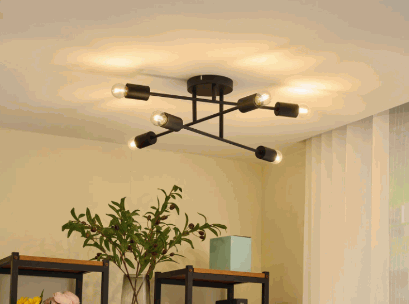
Are LED Ceiling Lights Safe?
LED ceiling lights are considered safe for home use, as they emit low heat and do not produce ultraviolet or infrared radiation, making them a suitable option for various home environments.
Low Heat Emission
One of the key safety benefits of LED ceiling lights is their low heat emission, which reduces the risk of burns or fire hazards in residential settings.
This characteristic not only enhances safety for occupants, especially in homes with children or pets, but it also contributes significantly to energy efficiency. Unlike traditional lighting options, such as incandescent bulbs, which can become excessively hot during operation, LED ceiling lights remain cool to the touch, mitigating the potential for heat-related incidents.
When considering the overall impact on household energy consumption, LEDs are remarkably effective:
- They convert a greater percentage of energy into light rather than heat.
- They have a longer lifespan, reducing the frequency of replacements.
- Employing these energy-efficient lights can lead to substantial savings on electricity bills.
Therefore, switching to low heat-emitting lighting solutions not only fosters a safe living environment but also promotes a more sustainable and cost-effective approach to home illumination.
No UV Or Infrared Radiation
LED ceiling lights do not emit ultraviolet or infrared radiation, providing a safer lighting option that poses fewer health risks compared to certain traditional lighting types.
This characteristic not only enhances the overall safety of the environment but also contributes to a healthier indoor atmosphere. With traditional lighting, individuals may be exposed to harmful rays that can lead to skin damage or increased temperatures within a room. In contrast, the use of LED lights significantly minimizes such risks, making them ideal for use in enclosed spaces where people spend significant amounts of time.
The energy efficiency of LED technology means that these lights typically generate less heat, further promoting a comfortable and conducive setting for productivity and relaxation.
- Lower chance of skin irritation
- Reduced risk of overheating
- Safety in schools and workplaces
- Enhanced visual clarity and comfort
By embracing LED lighting, individuals can enjoy a myriad of health benefits while ensuring a tranquil environment free from the negative effects typically associated with conventional bulbs.
RoHS Compliant
Many LED ceiling lights are RoHS compliant, meaning they adhere to regulations limiting hazardous substances, thus ensuring a safer option for both users and the environment.
This compliance not only safeguards the health of individuals by reducing exposure to toxins but also plays a crucial role in protecting our planet. By opting for lighting solutions that meet these safety standards, households can significantly contribute to minimizing environmental degradation. Implementing LED lighting solutions in residential spaces further promotes energy efficiency, which translates to lower electricity bills and a smaller carbon footprint.
- Reduced energy consumption
- Lower carbon emissions
- Longer lifespan compared to traditional bulbs
Prioritizing such eco-friendly lighting options not only enhances the quality of life but also supports a more sustainable future for generations to come.
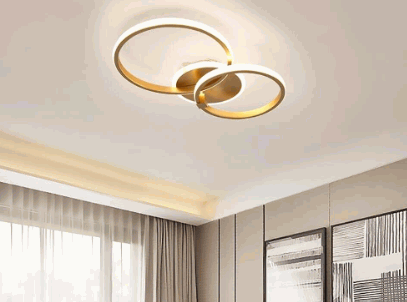
How Do LED Ceiling Lights Compare To Other Types Of Lighting?
When comparing LED ceiling lights to other types of lighting such as incandescent, fluorescent, and halogen lights, several factors come into play, including energy efficiency, lifespan, and overall cost-effectiveness.
Incandescent Lights
Incandescent lights are one of the traditional lighting options that have been largely replaced by LED ceiling lights due to their higher energy consumption and shorter lifespan.
Despite being a staple in homes for decades, incandescent lights consume significantly more electricity compared to their modern counterparts, resulting in higher energy bills for consumers. Their average lifespan of approximately 1,000 hours is far less than that of LED lights, which can last more than 25,000 hours.
This brief lifespan not only necessitates frequent replacements but also contributes to increased waste, making incandescent options less environmentally friendly.
In contrast, LED ceiling lights offer numerous advantages, including:
- Lower energy consumption, leading to cost savings.
- A much longer lifespan reduces the frequency of replacements.
- Less heat production, enhancing safety and comfort.
- A wide range of color temperatures and brightness levels for diverse applications.
As such, making the switch to LED lighting not only benefits one’s wallet but also supports sustainable living practices in an increasingly eco-conscious world.
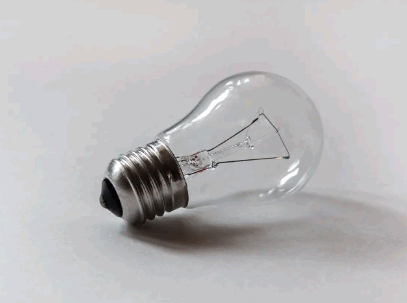
Fluorescent Lights
Fluorescent lights offer better energy efficiency than incandescent options; however, they still lag behind LED technology in terms of lifespan and overall lighting quality.
In fact, while fluorescent lights convert a significant portion of electricity into visible light, the latest LED innovations surpass them in both efficiency and longevity, making them a more sustainable choice. It’s crucial to consider the environmental impact of each lighting type. For example:
- Fluorescent lights contain mercury, which poses hazardous waste disposal concerns.
- LEDs, in contrast, are devoid of toxic materials and boast a lifespan of over 25,000 hours, significantly reducing replacement frequency.
This longevity not only translates into diminished waste but also allows homeowners and businesses alike to benefit from lower energy costs over time. Emphasizing the transition to LED lights can lead to substantial savings, a reduced carbon footprint, and an overall enhancement in the lighting experience.
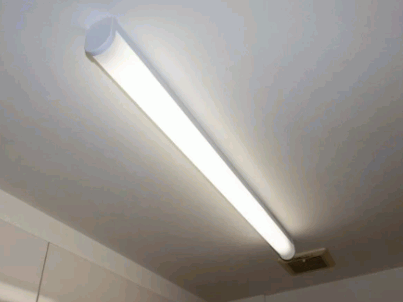
Halogen Lights
Halogen lights, a type of incandescent lighting, provide bright illumination but are less energy efficient than LED ceiling lights, which offer longer lifespans and broader design options.
When evaluating lighting solutions, it’s essential to consider their characteristics thoroughly. Halogen lights, while delivering vibrant, warm light that enhances the ambiance of a room, significantly consume more energy compared to their LED counterparts.
- LED ceiling lights not only utilize less power but can also last up to 25 times longer, making them a cost-effective choice in the long run.
- In terms of design flexibility, LEDs come in various shapes and colors, allowing for tailored aesthetics that cater to different interior styles.
- LED technology suits various applications, from residential spaces to commercial venues, while providing consistent brightness without the heat generation often associated with halogen lights.
Consequently, it’s apparent that transitioning to LED lighting can lead to enhanced energy savings and creative versatility in any lighting design.
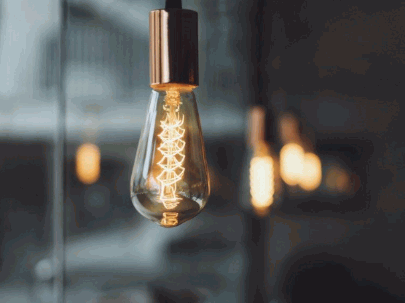
What Factors Should Be Considered When Choosing LED Ceiling Lights?
When selecting LED ceiling lights for your home, several factors must be considered, including lumens for brightness, color temperature, dimmability, and the overall size and design of the fixtures to match your lighting preferences.
Lumens And Brightness
Understanding lumens is essential when choosing LED ceiling lights, as this measurement indicates the brightness of the fixtures and directly impacts the lighting quality in your space.
When selecting the appropriate lighting for different areas within your home, it’s important to recognize that not all rooms require the same amount of brightness. For instance, a cozy bedroom typically benefits from softer lighting, which can help create a relaxed atmosphere. Conversely, areas such as the kitchen or workspace may need brighter illumination for practical tasks.
The lumens value is crucial here; a higher lumen count will yield brighter light, whereas a lower count produces a softer glow.
- Living Room: 1,500-3,000 lumens
- Kitchen: 5,000-10,000 lumens
- Bedroom: 2,000-4,000 lumens
- Office/Study: 3,000-6,000 lumens
By understanding how lumens correlate with lighting requirements throughout the home, it’s easier to create a space that both meets functional needs and enhances the overall ambiance.
Color Temperature
Color temperature, measured in Kelvin, plays a critical role in determining the mood and atmosphere created by LED ceiling lights, with options ranging from warm white to cool white and daylight LED. Understanding this concept is essential for anyone looking to enhance their living spaces, as the right lighting can significantly impact how a room feels and functions. The color temperature influences not only aesthetics but also the perceived size and comfort of a room, making it a vital consideration for homeowners and designers alike.
When selecting the appropriate Kelvin level for various areas, one must consider the intended purpose of each space. For instance,
- Living rooms might benefit from a warm white light, typically around 2700K to 3000K, to create a cozy and inviting atmosphere.
- Bedrooms often utilize similar warm tones, promoting relaxation and tranquility.
- Kitchens, on the other hand, may thrive under cooler temperatures around 4000K, providing a bright and energizing environment ideal for meal preparation.
- Workspaces can further enhance productivity with daylight bulbs ranging from 5000K to 6500K, which mimic natural light and help keep individuals alert and focused.
By considering the color temperature of lighting in each area, one can create a harmonious environment that aligns with their lifestyle and preferences.
Dimmability
Dimmability is an important feature to consider when choosing LED ceiling lights, as it allows for greater lighting flexibility, enabling you to adjust brightness levels to create the desired ambient light in your space.
This capability not only enhances the aesthetic appeal of a room but also significantly influences mood and functionality. In various settings, such as living rooms, dining areas, or home theaters, having the ability to modulate light intensity can transform an ordinary environment into something special.
- For instance, bright lighting may be ideal for activities like reading or cooking, while softer lights can foster a relaxing atmosphere during movie nights.
- Customizable dimmability caters to personal preferences, accommodating different times of day and seasonal changes.
When individuals invest in dimmable LED ceiling lights, they are not merely purchasing fixtures; they are embracing a versatile lighting solution that enhances the entire user experience, bringing a sense of control and comfort to their living spaces.
Size And Design
The size and design of LED ceiling lights are crucial factors that influence fixture installation and overall compatibility with your home decor and lighting styles.
Choosing appropriately sized lighting fixtures is essential for creating a harmonious environment, where functionality meets aesthetic appeal. A well-fitted ceiling light not only illuminates the space effectively but also elevates the overall room appearance, enhancing various decorating styles, from modern minimalism to cozy vintage.
- For instance, in a compact room, sleek and flush-mounted designs might be preferable to save space, while in larger areas, more elaborate fixtures can serve as striking focal points.
- When selecting LED ceiling lights, consider how well they connect with existing decor elements, as the right choice can significantly impact the ambiance.
Paying attention to both the size and the style of the lighting can transform a room, ensuring it feels well-coordinated and thoughtfully designed.
